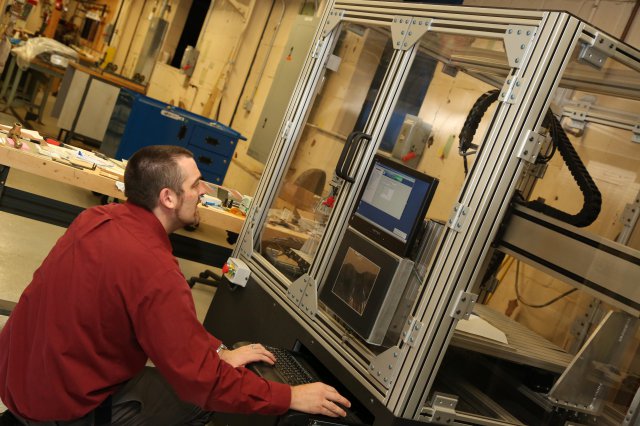Picatinny Arsenal Develops Additive Manufacturing for US Armed Forces

Latest News
January 2, 2014
Additive manufacturing (AM) has been embraced by experts in nearly every field for its flexibility and speed in producing complex design. This includes research and development teams working for the US military. Entire UAV wings can be built in a single print, the Navy is interested in the potential for on-the-spot spare part and tool production, and the Army has brought 3D printing to the front lines for similar reasons.
Picatinny Arsenal, the Joint Center of Excellence for Armaments and Munitions, located in northern New Jersey, is a research, education and training facility for all the branches of the US military. A team of 5,000 works on improving the combat effectiveness of the US military in a number of fields, including IED defeat technologies, precision-guided munitions, fire control systems, small-arms weapon systems, and gunner protection armor.
 One of the newest R&D tools to be found at Picatinny is the Multi-Axis Modular Manufacturing Platform. This system includes multiple production modules, including AM capability with materials such as gypsum, metal powders, and plastic filaments. The machine is very much an all-in-one device that can further work AM built parts through traditional machining to produce whatever is required without the need for a full-scale workshop.
One of the newest R&D tools to be found at Picatinny is the Multi-Axis Modular Manufacturing Platform. This system includes multiple production modules, including AM capability with materials such as gypsum, metal powders, and plastic filaments. The machine is very much an all-in-one device that can further work AM built parts through traditional machining to produce whatever is required without the need for a full-scale workshop.
One primary area of AM research currently underway at Picatinny involves printed electronics. By adding a conductive ink, such as one made from silver, electronics can be embedded into a weapon or other piece of equipment, freeing up room for other purposes, or simply reducing the waste associated with manufacturing. As an example, artillery shells with printed electronics leave more room in the round for additional firepower.
“Instead of having to machine out the grooves and put the sensor and the wires in the model, I can just use our printers to print electronics onto the model so they are already embedded,” said James Zunino, materials engineer and Printed Electronics, Energetic, Materials, & Sensors, or PEEMS, co-chair. “With printed electronics versus conventional, you’re not chemically etching away all the material, you’re printing them the way you want them. It’s more environmentally friendly, it’s more cost effective, and it’s more time efficient.”
It isn’t all about bigger explosions, however. Picatinny is also examining the potential of 3D printing parts of helmets to include an antenna. By printing the antenna in silver nanoparticles directly onto a flexible polyimide substrate, the end product could be embedded in a helmet, rather than strapped to the outside as is the current practice.
Below you’ll find a video about Picatinny Arsenal.
Source: US Army
Subscribe to our FREE magazine, FREE email newsletters or both!
Latest News
About the Author
John NewmanJohn Newman is a Digital Engineering contributor who focuses on 3D printing. Contact him via [email protected] and read his posts on Rapid Ready Technology.
Follow DE





